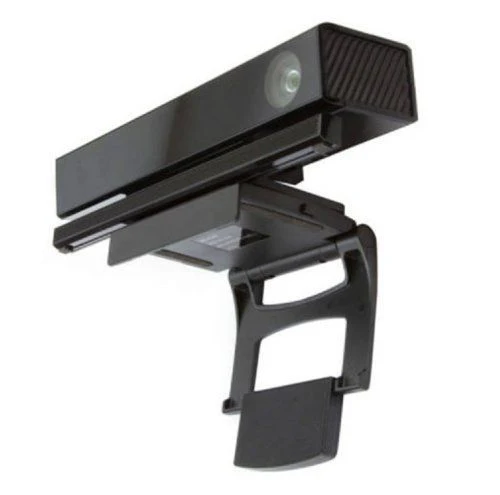

Note where the cord comes out of the bottom on the Kinect. Place the acrylic glass on the bottom on the Kinect and mark the locations of the 6 screw holes. We roughly measure the size of the Kinect and cut-out a rectangle of acrylic glass. We bought a 1/4 inch thick piece of acrylic glass at Lowes. We then need to cutout a piece of acrylic glass that will serve as a rigid body to attach to. So pick up a 1/4 inch screw that is 1-1.5 inches long with a matching nut. We also need a screw to attach to the tripod. I don’t remember the exact screws we bought, so just bring in one of the Kinect screws and find one that is the same diameter but longer in length (around 1.5 inches). (You won’t be able to put everything back together). The thread count on the screws will not match perfectly, so this will most likely permanently damage the screw holes.

We went to the local hardware store (Lowes) and bought some longer screws that fit the original holes. Now we will use the original screw holes to connect to an acryllic (plexiglass base).įollow steps 6 & 7 on iFixit, to remove the bottom T10 security screws. Use scissors, a hacksaw, whatever you can find. We then just cut-off the plastic from the base using some metal clippers. Basically you remove the protective rubber pad on the base, then open the base using the T6 screwdriver. We followed the directions on iFixit, up to step 5. This requires purchasing a set of Torx (T6 & T10) security screwdrivers. Do not proceed unless you are comfortable with power tools.įirst we took off the motor and useless base for the Kinect. You will need a sheet of plexiglass (acrylic), some screws, Torx security screwdrivers, a power drill and a power jigsaw. This is definitely the most robust method, but also the most time consuming and costly (and dangerous?). Here we use the existing screws holes of the Kinect to rigidly mount to a piece of plexiglass. This process would also work to attach a tripod mount to the bottom of the Kinect. Here we attached it to the top of the Kinect, in order to rigidly mount another camera on top. This was then glued with expoy directly to the base of the Kinect.

We then sawed off the top of the tripod, retrieving only the mount. We were in a time cruch, so we headed out to Radio Shack and bought a cheap tripod: For the camera mount, you might be able to buy an adhesive camera mount such as: Here we attach a tripod mount directly to the body of the Kinect (instead of the wiggly bottom) with adhesive. This is the simplest, easiest and possibly recommended method. Method 1: (developed by Kevin Karsch, implemented by Rajinder Sodhi) We in no way claim that this is safe to yourself, others or your Kinect sensor.

You WILL do permanent and irrevocable damage to your Kinect if you continue down this path. Our research group has come up with two methods to mount directly to the Kinect.ĭisclaimer: Both of these methods involve modifying the Kinect. DSLR) or a projector, then you need to get rid of the wiggle. If you need the Kinect sensor to stay put, say to register it to another camera (e.g. Unfortunately, they all mount to the bottom of the Kinect (beneath the tilt motor), leaving the Kinect to jiggle and wiggle like it is listening to “Gettin’ Jiggy wit It.” By now there are 8 million different ways to mount your Kinect to a tripod, your wall or the back of your TV. The Kinect sensor does not come equipped with a tripod mounting screw.


 0 kommentar(er)
0 kommentar(er)
